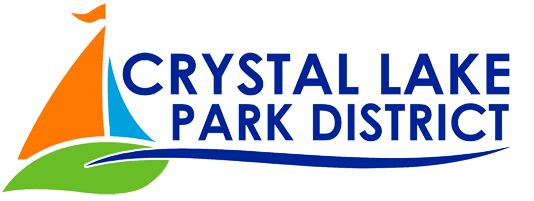POLLINATOR CONSERVATION
The purpose of these concentrated gardens is to provide habitat and a food source to benefit butterflies, moths, bees and other pollinators. Pollinators are critical to the environment and our agricultural industry. One in three bites of food that a person eats in a meal has been pollinated by one of our precious pollinators.
pollinator garden locations
Nature Center Landscape Beds
Veteran Acres - Pond Buffer/Rain Garden adjacent to Acorn Alley/Rain Gardens adjacent to Rotary Building
Main Beach triangle between Dole & Lakeshore Drive
Woodscreek Park
Hampton Park
Kamijima Park shoreline
Ken Bird Park
Four Colonies Park
Celebrating Earth Day
On April 22, 2023, Earth Day, the Crystal Lake Park District distributed pollinator garden seed packets to Community Clean Up Volunteers. In addition, the free seed packets were available at the Nature Center and Administration Office.
The packets included the following mix of Mesic Prairie Wildflower seeds (Medium Moisture) designed to be a good fit for pollinator gardens on residential properties where height and maintenance are important considerations:
| COMMON NAME | SCIENTIFIC NAME | HEIGHT | BLOOM COLOR | % OF MIX |
| Black Eyed Susan | Rudbeckia hirta | 2' | Yellow | 16 |
| Butterfly Milkweed | Asclepias tuberosa | 2' | Orange | 1.6 |
| Hoary Vervain | Verbena stricta | 2' | Blue | 9.6 |
| Ohio Spiderwort | Tradescantia ohiensis | 3' | Blue/Purple | 1.6 |
| Partridge Pea | Chamaecrista fasciculata | 2' | Yellow | 16 |
| Prairie Blazing Star | Liatris pychnostachya | 4' | Purple | 1.6 |
| Purple Coneflower | Echinacea purpurea | 4' | Lt. Purple | 12 |
| Purple Prairie Clover | Dalea purpurea | 2' | Purple | 8 |
| Rattlesnake Master | Eryngium yuccifolium | 4' | White | 1.6 |
| Side-Oats Grama | Bouteloua curipendula | 2' | Green/Brown | 12 |
| Smooth Blue Aster | Symphyotrichum laeve | 4' | Blue | 2.4 |
| Smooth Penstermon | Penstemon digitalis | 4' | White | 6.4 |
| Stiff Goldenrod | Oligoneuron rigidum | 4' | Yellow | 4.8 |
| Wild Bergamot | Monarda fistulosa | 4' | Lt. Purple | 4.8 |
| Wild Quinine | Parthenium integrifolium | 4' | White | 1.6 |
 MAYORS MONARCH PLEDGE
MAYORS MONARCH PLEDGE
The Mayors' Monarch Pledge program is led by the National Wildlife Federation and focuses on efforts to sustain monarch butterfly and pollinator habitats. The Crystal Lake Park District accepted the pledge in 2022-23 and is pursing action items. The Mayors' Monarch Pledge is an important effort for the Crystal Lake Park District and our community to protect monarch butterfly and other pollinator habitats.
 Bio Blitz
Bio Blitz

CONSIDER USING NATIVE PLANTS IN LANDSCAPING
TYPES OF POLLINATORS
Many species of butterflies as well as other pollinators are in decline. Luckily, supporting them can be as simple as adding native plants to your existing landscape. Native plants have evolved with our region's conditions and can be relatively easy to establish. Adding native plants is important because many pollinators have adapted to specialize in feeding primarily on certain native species. Also, many cultivated non-native plants are selected for showy traits that sometimes diminish their pollen producing ability. The following are some of the recommended native plant types that benefit pollinators and can often be purchased at plant nurseries.
| NATIVE FORBS | NATIVE GRASS | NATIVE TREES AND SHRUBS |
| Asters | Little Blue Stem | Buckeye |
| Blazing Stars | Prairie Dropseed | Cherry |
| Bonesets | Side-oats grama | Dogwoods |
| Cardinal Flower | Hawthorn | |
| Golden Rods | New Jersey Tea | |
| Ironweeds | American Plum | |
| Joe-pye-weeds | Eastern Redbud | |
| Milkweeds | Spicebush | |
| Mountain Mint | ||
| New England Aster | ||
| Phlox | ||
| Coreopsis | ||
| Bergamot |
Many of these native plants can be found at your local garden center. Most centers these days will have at least a small native plant selection. There is also a growing number of nurseries specializing in native species propagation. A good resource for finding native plant suppliers in our region is The Wildflower Preservation and Propagation Committee based in McHenry County.
When land use goals allow, the following maintenance practices are also beneficial to pollinators:
- Wait to mow later into the spring as some early flowering species in turf can provide nourishment for pollinators.
- Allow a certain amount of flowering "weeds" to persist in turf by limiting or eliminating lawn treatments.
- Leave the leaves where possible in the fall as leaves provide nutrients, insulation and important cover for overwintering insects.
- Allow some bare soil areas that can host ground nesting pollinators.
- Select some early and late blooming plants that provide a food source when other sources are scarce.
- Save the stems. Hold off on pruning and snipping late spring or let the stems naturally decompose. The last growing season's stems provide nesting sites for insects and can often have insect eggs on them.
- Leave snags and logs where possible as these provide burrowing chambers for insects.
RESOURCES
Please find within each resource links below, guides to help you start your pollinator garden journey! Plant selection ideas, landscape ideas and information on bloom periods will help you to become a good steward of pollinators on your property.
How to Build a Pollinator Garden, publication provided by the U.S. Fish & Wildlife Service
How to Create a Pollinator Garden in 7 Steps, publication provided by Architectural Digest
